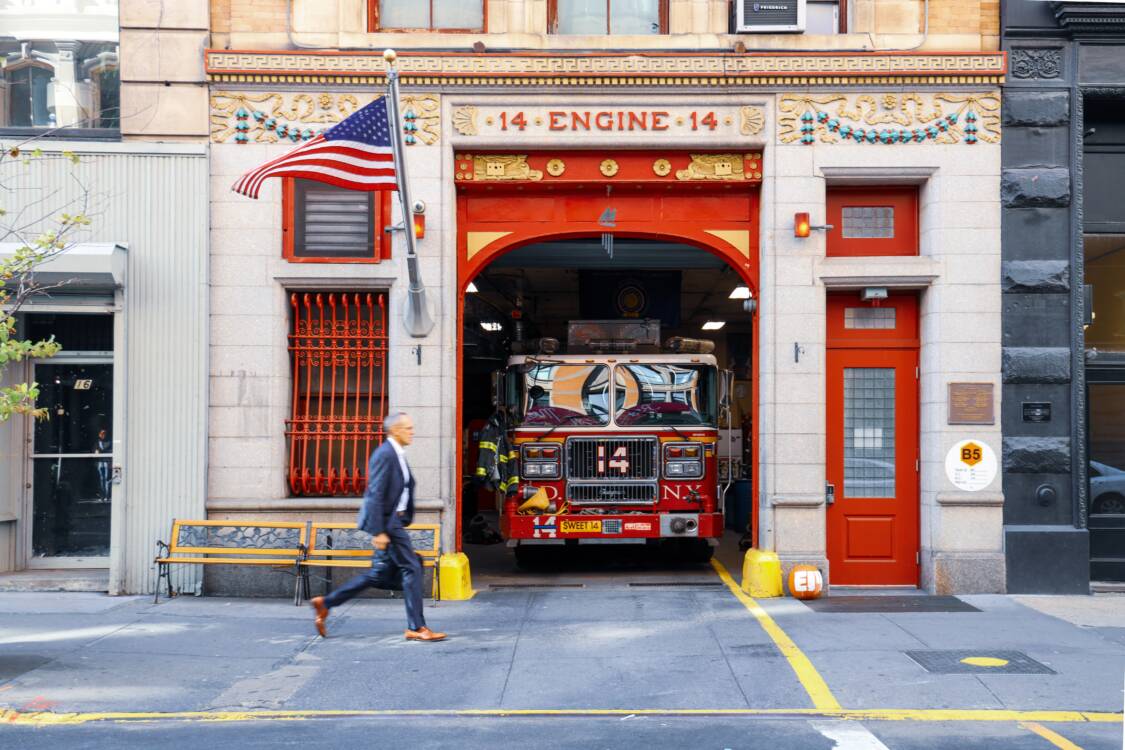InspectNTrack’s software simplifies municipal fire and life safety inspections, which helps inspectors maintain safety at city-owned buildings.
Similar to other industries that utilize InspectNTrack for inspections, municipal risk management inspectors play a key role in keeping city owned buildings safe and equipped with working and maintained fire protection equipment.
This can include city hall, fire departments, police departments, correctional facilities, recreation centers, museums, parks, and any other municipal owned property.
InspectNTrack offers municipal inspectors an easy way to develop an inspection route that includes all of the different municipal buildings, and it displays an inventory of the fire and life safety equipment within each building along with inspection and maintenance records.
Benefits of Municipal Fire and Life Safety Inspections
Fire and life safety inspections are crucial for maintaining the well-being of communities and ensuring the safety of occupants in various buildings and establishments. Municipalities play a vital role in conducting these inspections and overseeing maintenance activities related to fire and life safety equipment.
Municipal inspectors work to uphold safety standards, enforce regulations, and promote the well-being of communities. These inspectors are often local government authorities who assess various aspects of public and private properties, including buildings, infrastructure, and public spaces.
By conducting thorough inspections, municipalities aim to identify potential hazards, ensure compliance with codes and regulations, and maintain the overall safety of publicly owned buildings. Municipal inspectors are also charged with keeping fire and life safety equipment up to date. This generally includes performing periodic inspections and maintenance as recommended by NFPA standards.
Municipal inspections serve as a vital safeguard to protect the public’s safety and well-being. By conducting regular inspections, local authorities can identify potential hazards and ensure that fire and life safety equipment is in good working order and ready to use in case of emergency. Regular inspections help identify potential fire hazards and ensure compliance with fire codes and regulations. By detecting and rectifying issues proactively, municipalities can significantly reduce the risk of fire incidents, protecting lives and property within their jurisdiction.
Inspection App Solutions

Municipal Inspections Ensure Occupant Safety and Well Being
Fire and life safety equipment, such as fire alarms, sprinkler systems, and emergency exits, are critical for ensuring the safety and well-being of occupants in buildings. This equipment serves as the first line of defense for the detection of fires. When fires do occur, this equipment kicks into action to save lives and property. Fire alarms contact and notify the local fire department while sprinkling systems begin fire suppression work. Emergency exits, exits signs, and fire doors all highlight the designated egress routes and help guide building occupants out of the building to safety. By conducting inspections and maintenance activities, municipalities ensure that these systems are in proper working order, providing a safe environment for residents, employees, and visitors.
Municipal Inspections Promote Compliance with Legal and Insurance Requirements
Municipal fire and life safety inspections help to ensure compliance with local fire codes, regulations, and standards. Regular inspections help municipalities ensure that their fire and life safety assets are in good working order, promoting a safer environment. Proper documentation of these inspections can reduce liability in the event that an emergency occurs. Moreover, compliance with fire safety regulations often affects insurance premiums, and thorough inspections can help property owners maintain adequate coverage and avoid penalties.
Municipal Inspections Ensure Preservation of Property and Assets
Fires can cause significant damage to buildings and property, resulting in substantial financial losses. By conducting inspections, municipalities help identify potential fire risks and ensure that fire protection systems are operational. This proactive approach helps prevent extensive damage, preserving property and assets within the community.
Municipal Inspections Aid in Public Confidence and Reputation
Efficient fire and life safety inspection programs contribute to building public confidence and trust in municipal authorities. By actively promoting and enforcing fire safety measures, municipalities demonstrate their commitment to public safety. This fosters a positive reputation for the municipality and encourages residents, businesses, and investors to participate in the community’s growth.
Requirements for Municipal Fire and Life Safety Inspections
Outlined below are 5 requirements for municipal fire and life safety inspections.
Requirement 1: Establishing Legal Frameworks
Municipalities must develop and implement local ordinances, regulations, and codes that address fire and life safety inspections. These frameworks define the scope, frequency, and responsibilities of inspections, ensuring a consistent and structured approach to fire safety. Most frequently these regulations are based upon standards developed by the National Fire Protection Association (NFPA). The NFPA is a U.S. based international nonprofit organization devoted to eliminating death, injury, property, and economic loss due to fire, electrical, and related hazards. NFPA standards are generally recognized as the gold standard and are incorporated by most municipalities when developing a municipal fire and life safety inspection program. NFPA standards are quite extensive and cover all types of fire and life safety equipment. They offer guidance for proper installation, use, inspection, testing, and maintenance of fire and life safety equipment.
Requirement 2: Trained and Certified Inspectors
Municipalities need to employ or contract trained and certified fire and life safety inspectors. These professionals should possess the necessary knowledge and expertise to assess fire hazards, evaluate fire protection systems, and identify compliance issues. Regular training and professional development programs ensure that inspectors stay updated with the latest codes and regulations.
Requirement 3: Inspection Schedules and Procedures
Municipalities should establish inspection schedules based on the type and occupancy of buildings. High-risk structures, such as hospitals, schools, and high-rise buildings, may require more frequent inspections. Inspection procedures should be well-defined, covering all relevant aspects of fire and life safety, including fire alarms, emergency lighting, fire extinguishers, sprinkler systems, exit signage, and evacuation plans.
Requirement 4: Compliance Enforcement and Penalties
Municipalities must have an effective enforcement mechanism in place to ensure compliance with fire and life safety regulations. This may involve issuing citations, imposing fines, or taking legal action against non-compliant property owners. Regular inspections, accompanied by clear consequences for non-compliance, create a strong deterrent and foster a culture of adherence to fire safety standards.
Requirement 5: Collaboration and Outreach
Municipalities should actively collaborate with local fire departments, building owners, businesses, and community organizations to promote fire and life safety awareness. Conducting outreach programs, distributing educational materials, and organizing training sessions create a shared responsibility for fire safety within the community.
Conclusion
Municipal fire and life safety inspections are crucial for protecting lives, property, and the overall well-being of communities. By conducting regular inspections and maintenance activities, municipalities can prevent fire incidents, ensure compliance with regulations, preserve property, and foster public confidence. Establishing legal frameworks, employing trained inspectors, implementing inspection schedules, enforcing compliance, and promoting collaboration are key components in developing an effective municipal fire and life safety inspection program. By prioritizing fire safety, municipalities can create safer environments and enhance the quality of life for their residents.

